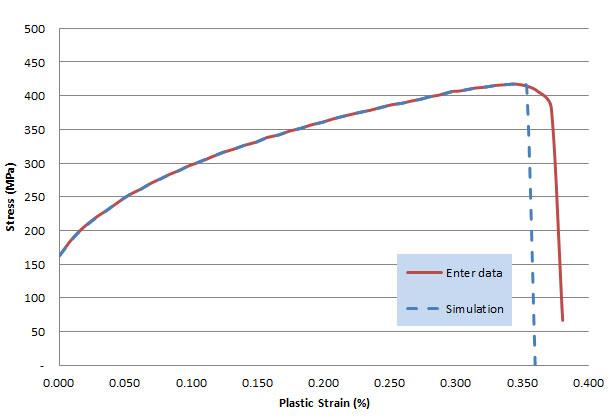Hi Everyone,
I use Radioss for simulation a tensile test. I used LAW36 - Elastic Plastic Piecewise Linear Material -
I used the failure strain criteria. But the elements were failed before reach the enter failure strain value.
In the atached figure, the red curve is stress - Strain curve. This is the enter data. The blue curve is simulation result. You can see the gap of the end.
Would you show me, how to get the result with the simulation result curve follow enter data?
Thank you!
<?xml version="1.0" encoding="UTF-8"?>